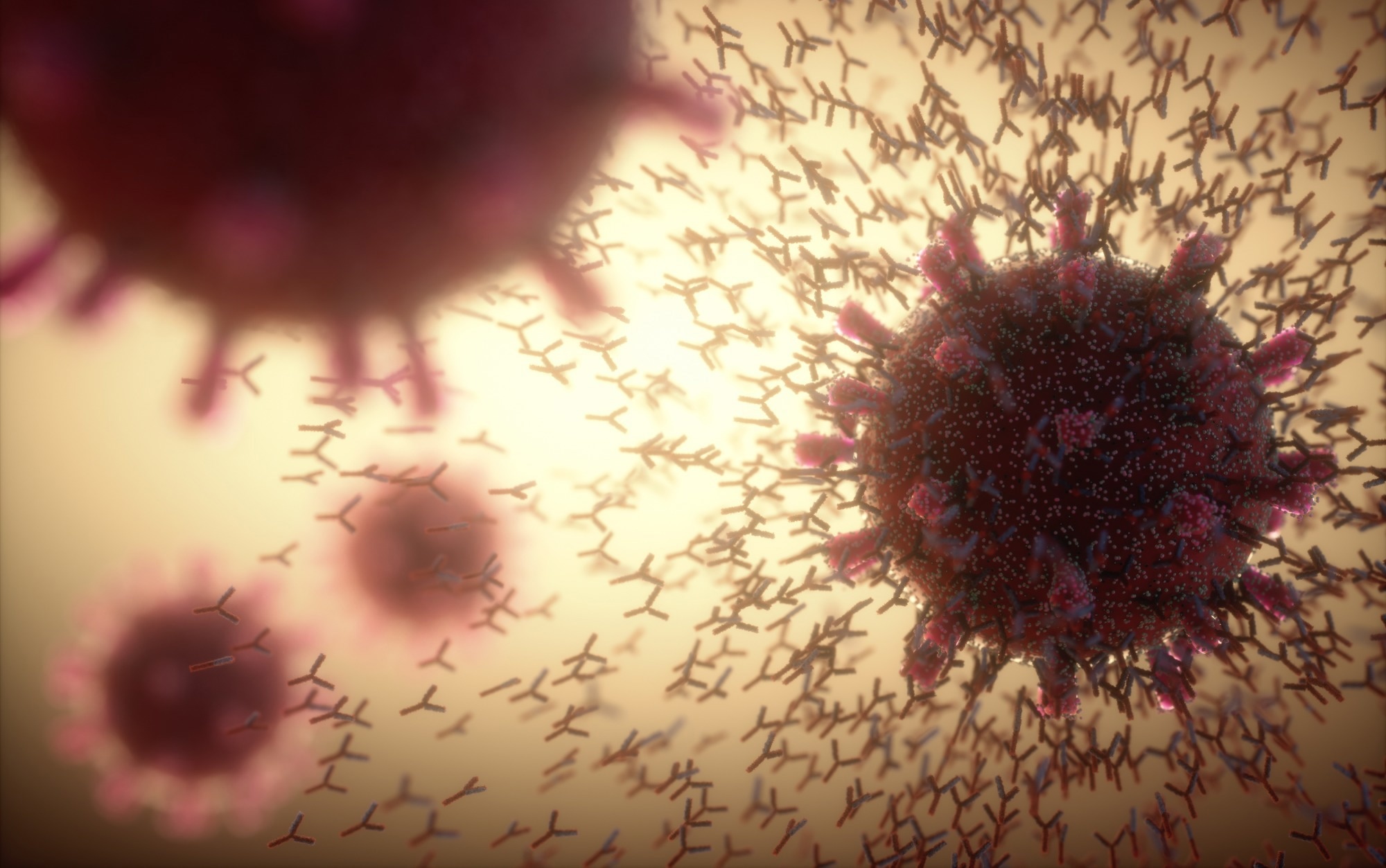Inhaled fluticasone furoate falls flat in speeding up COVID-19 recovery, says ACTIV-6 trial
In a recent article published in the New England Journal of Medicine, researchers presented the findings of an ongoing double-blinded, randomized, placebo-controlled platform-protocol clinical trial, Accelerating COVID-19 Therapeutic Interventions and Vaccines (ACTIV-6).
 Study: Inhaled Fluticasone Furoate for Outpatient Treatment of Covid-19. Image Credit: ktsdesign / Shutterstock
Study: Inhaled Fluticasone Furoate for Outpatient Treatment of Covid-19. Image Credit: ktsdesign / Shutterstock
Background
The need for more effective oral antiviral therapies to prevent progression to severe coronavirus disease 2019 (COVID-19) is ongoing as COVID-19 vaccination rates are variable (not equitable) globally, and availability of drugs is limited, especially in low- and middle-income countries (LMICs).
Randomized trials have investigated the therapeutic effects of several repurposed drugs for COVID-19, e.g., dexamethasone, and some inhaled glucocorticoids, such as budesonide and ciclesonide; however, most fetched inconsistent results.
The sample size of five trials of inhaled glucocorticoids ranged from 146 to 2530 participants, predominantly unvaccinated persons. Even though these trials reported a substantial benefit of budesonide use over placebo, their results remained conflicting, and that is why regulatory authorities do not recommend inhaled glucocorticoid therapy as an early intervention to combat severe acute respiratory syndrome coronavirus 2 (SARS-CoV-2).
About the study
In the ACTIV-6 trial, researchers enrolled eligible outpatients (non-hospitalized, aged ≥30 years) with reverse transcriptase-polymerase chain reaction (RT-PCR)-confirmed mild-to-moderate COVID-19 between August 6, 2021, and February 9, 2022, from 91 sites in the United States of America (USA).
They investigated the treatment effects of inhaled fluticasone furoate, a repurposed COVID-19 drug that is four times more potent than budesonide and has more receptor affinity than the propionate ester.
The team randomly assigned all the enrolled participants to receive a once-daily dosing of 200 μg inhaled fluticasone furoate for 14 days or placebo and monitored time to sustained recovery, defined as three days in series without symptoms. Other study outcomes were hospitalization/death by day 28 and the need for emergency department (ED) or urgent-care (UC) visits in the same timeframe.
Since the ACTIV-6 trial began and is ongoing in the post-COVID-19 vaccine era, its participants mainly represented individuals infected with SARS-CoV-2's Delta and Omicron (BA.1.1) variants. All these individuals presented at least two symptoms of acute SARS-CoV-2 infection at least seven days before enrollment.
The team used a Bayesian proportional hazards model for primary outcome analysis. They set decision thresholds and other analysis variables to balance overall statistical power and control the type I error rate. Accordingly, a hazard ratio (HR) of more than one indicates the benefit and efficacy of the intervention.
They also created the modified intention-to-treat population for the primary analyses encompassing all participants who received the trial drug. A safety population, a subset of the modified intention-to-treat population, included individuals who took at least one dose of the trial drug or placebo.
Likewise, the team analyzed secondary outcomes with Bayesian regression models but did not use them for formal decision-making. Finally, they assessed heterogeneity in treatment effect in prespecified subgroups and for covariates, such as age, gender, body mass index (BMI), symptom severity, and durations.
Results
The researchers assigned 715 and 692 participants to receive inhaled fluticasone furoate and placebo, respectively; however, the final analytical set had 656 and 621 participants in these two study groups. The average time lapsed from symptom onset to receipt of inhaled fluticasone furoate or placebo was five days. Notably, 65% of the study participants had received at least two COVID-19 vaccine doses.
In the modified intention-to-treat population, the primary outcome of time-to-sustained recovery between the drug and placebo recipients was comparable, with an HR of 1.01. Likewise, both groups fared similarly with respect to secondary outcomes assessed through day 28 in this study.
Even though no deaths occurred and hospitalizations were rare (0.5% in each group), healthcare visits increased with inhaled fluticasone furoate therapy compared to placebo (3.2% versus 1.6%), indicating this treatment was unfavorable for COVID-19.
Furthermore, the authors noted differential treatment effects for vaccination status but not for time to recovery with fluticasone furoate (vs. placebo) with regard to study covariates. Among 845 vaccinated participants, those in the fluticasone furoate group showed faster recovery than those in the placebo group (HR=1.10), while the opposite was true for unvaccinated participants receiving fluticasone furoate.
Conclusions
Overall, treatment with inhaled fluticasone furoate at a daily dose of 200 μg for 14 days did not show a clinically relevant effect on outpatients with mild-to-moderate COVID-19 compared to a placebo. More importantly, it did not prevent the clinical progression of COVID-19; however, this trial is still ongoing.
- Inhaled Fluticasone Furoate for Outpatient Treatment of Covid-19, David R. Boulware, Christopher J. Lindsell, Thomas G. Stewart, Adrian F. Hernandez, Sean Collins, Matthew William McCarthy, Dushyantha Jayaweera, Nina Gentile, Mario Castro, Mark Sulkowski, Kathleen McTigue, G. Michael Felker, et al. for the ACTIV-6 Study Group and Investigators, September 21, 2023, N Engl J Med 2023; 389:1085-1095 DOI: 10.1056/NEJMoa2209421, https://www.nejm.org/doi/full/10.1056/NEJMoa2209421?query=featured_home
Posted in: Drug Trial News | Medical Research News | Disease/Infection News | Pharmaceutical News
Tags: Body Mass Index, Clinical Trial, Coronavirus, Coronavirus Disease COVID-19, Dexamethasone, Drugs, Efficacy, Glucocorticoid, Healthcare, Medicine, Omicron, Placebo, Polymerase, Polymerase Chain Reaction, Receptor, Respiratory, Reverse Transcriptase, SARS, SARS-CoV-2, Severe Acute Respiratory, Severe Acute Respiratory Syndrome, Syndrome, Vaccine

Written by
Neha Mathur
Neha is a digital marketing professional based in Gurugram, India. She has a Master’s degree from the University of Rajasthan with a specialization in Biotechnology in 2008. She has experience in pre-clinical research as part of her research project in The Department of Toxicology at the prestigious Central Drug Research Institute (CDRI), Lucknow, India. She also holds a certification in C++ programming.